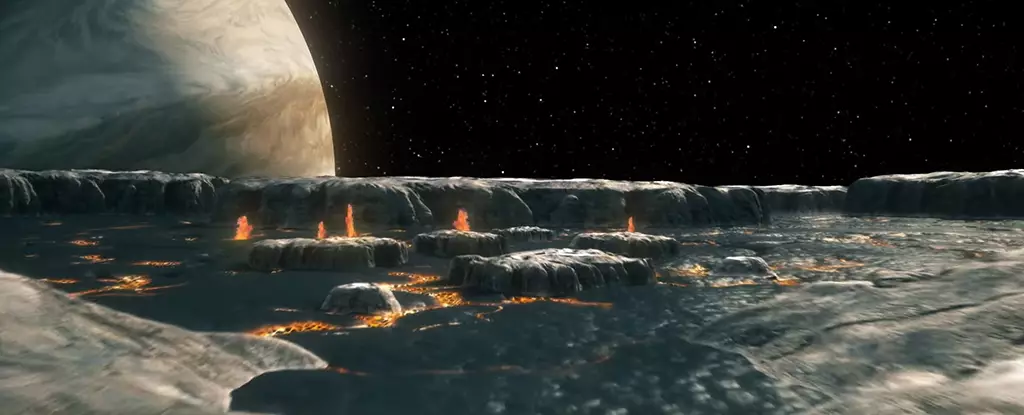Io, one of Jupiter’s many moons, has long captivated planetary scientists due to its remarkable geological activity. Touted as the most volcanically active body in the Solar System, it boasts approximately 400 volcanoes and an intricate network of lava flows that transform its surface into a chaotic yet fascinating landscape. Recent research, however, has challenged the prevailing theories regarding the source of this volcanic activity, suggesting that rather than a planet-wide magma ocean, Io’s eruptions are primarily powered by localized magma chambers embedded within a largely solid mantle.
The revolutionary findings were made possible through an innovative combination of data from NASA’s Juno spacecraft, which has provided detailed imaging and gravitational measurements of Io, along with historical observations of the moon’s tidal movements. A collaborative international team of researchers leveraged these insights to arrive at a fresh understanding of Io’s internal structure. This shift in our understanding of volcanic activity on Io calls into question the assumptions that have guided theoretical models of not only Io but potentially other celestial bodies as well.
The traditional view held by scientists was anchored in the belief that a vast ocean of magma exists beneath Io’s surface, functioning as a reservoir that feeds the moon’s numerous volcanoes. The hypothesis suggested that this magma ocean would be in constant flux, resulting in the dynamic surface features observed over the years. Yet the recent investigation has revealed that the tidal deformations responsible for producing internal heat are not substantial enough to substantiate the existence of a globally distributed magma ocean close to the surface.
The concept of tidal heating, a significant driver of Io’s volcanic activity, is linked to its elliptical orbit around Jupiter. This gravitational dance produces extreme tidal flexing, generating internal heat sufficient to melt portions of the moon’s interior. However, the new research indicates that the deformations observed are consistent with a more rigid structure—essentially pointing towards a solid mantle rather than a liquid one.
Scott Bolton, a prominent space physicist involved in the study, explains the implications of these findings: “If Io had a global magma ocean, we would expect much more pronounced tidal deformations.” This realization alters the framework within which scientists must consider other planetary bodies, potentially influencing future research regarding their geological characteristics and volcanic behaviors.
What does this mean for the broader understanding of planetary formation and evolution? The implications are significant. For decades, researchers have theorized that magma oceans might be a common feature among celestial bodies, especially during their formative stages. This new evidence from Io necessitates a reevaluation of such perspectives, possibly leading to a paradigm shift in how we approach the study of exoplanets and moons beyond our Solar System.
Moreover, the findings suggest that there could be a variety of internal structures and heating mechanisms at play, not just limited to Io, but applicable to other moons, such as Europa and Enceladus. For instance, understanding the internal dynamics of Io could offer parallels to how heat might impact the geological processes of these neighboring moons, which harbor potential subsurface oceans and ecosystems.
The Unfolding Mystery of Io’s Volcanism
Io’s surface, often likened to a “pizza,” exhibits vivid colors stemming from its diverse volcanic activity, with silicates and sulfur dioxide creating a landscape that is forever evolving. As researchers strive to unravel the complexities behind these eruptions, they are not only shedding light on Io but also building foundational knowledge that could enhance our understanding of similar environments across the cosmos.
The recent revelations about Io’s volcanic activity signal a pivotal moment in planetary science. As we broaden our inquiries into the mechanics of celestial bodies, including their driving geological forces, we deepen our comprehension of the diverse and dynamic universe we inhabit. The redefined understanding of Io not only enriches our knowledge of this intriguing moon but also informs the ongoing quest to explore and understand the myriad worlds that exist beyond our own.


Leave a Reply